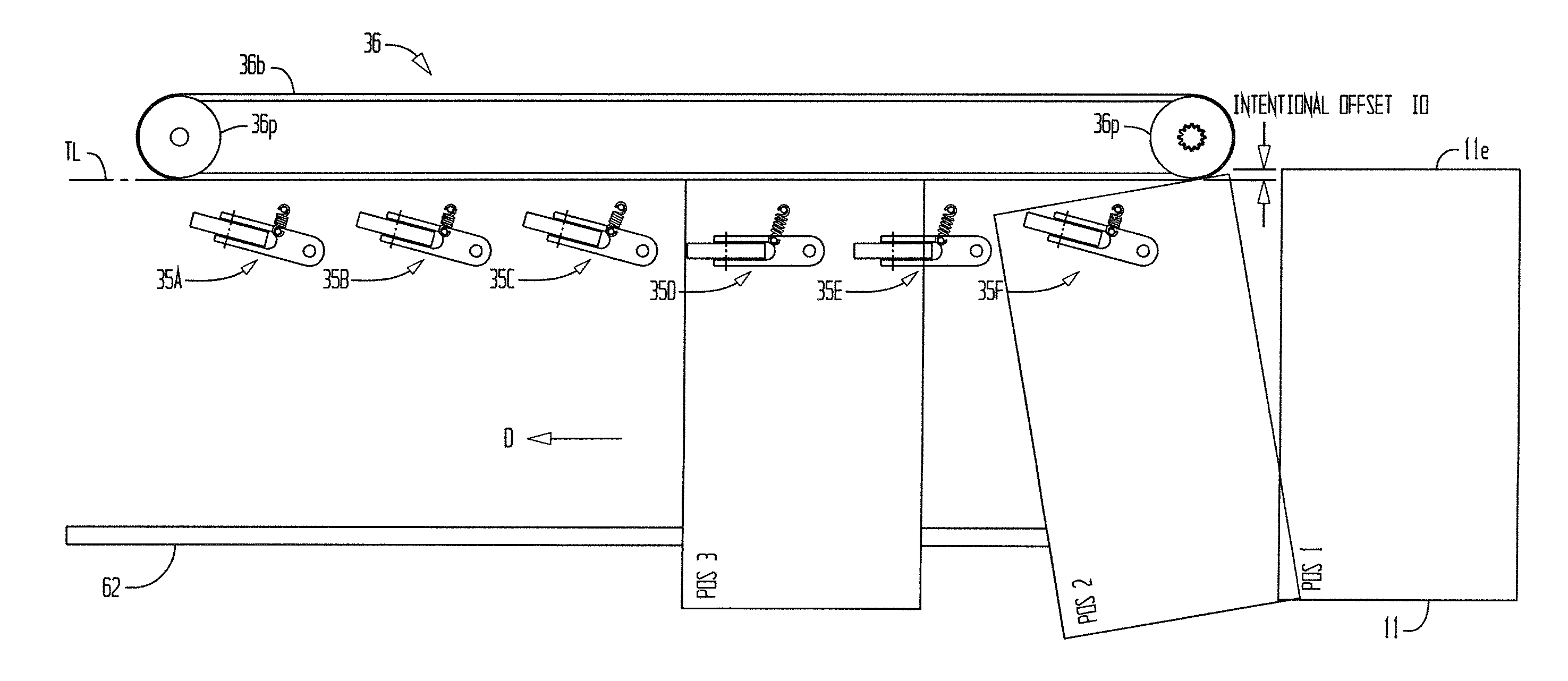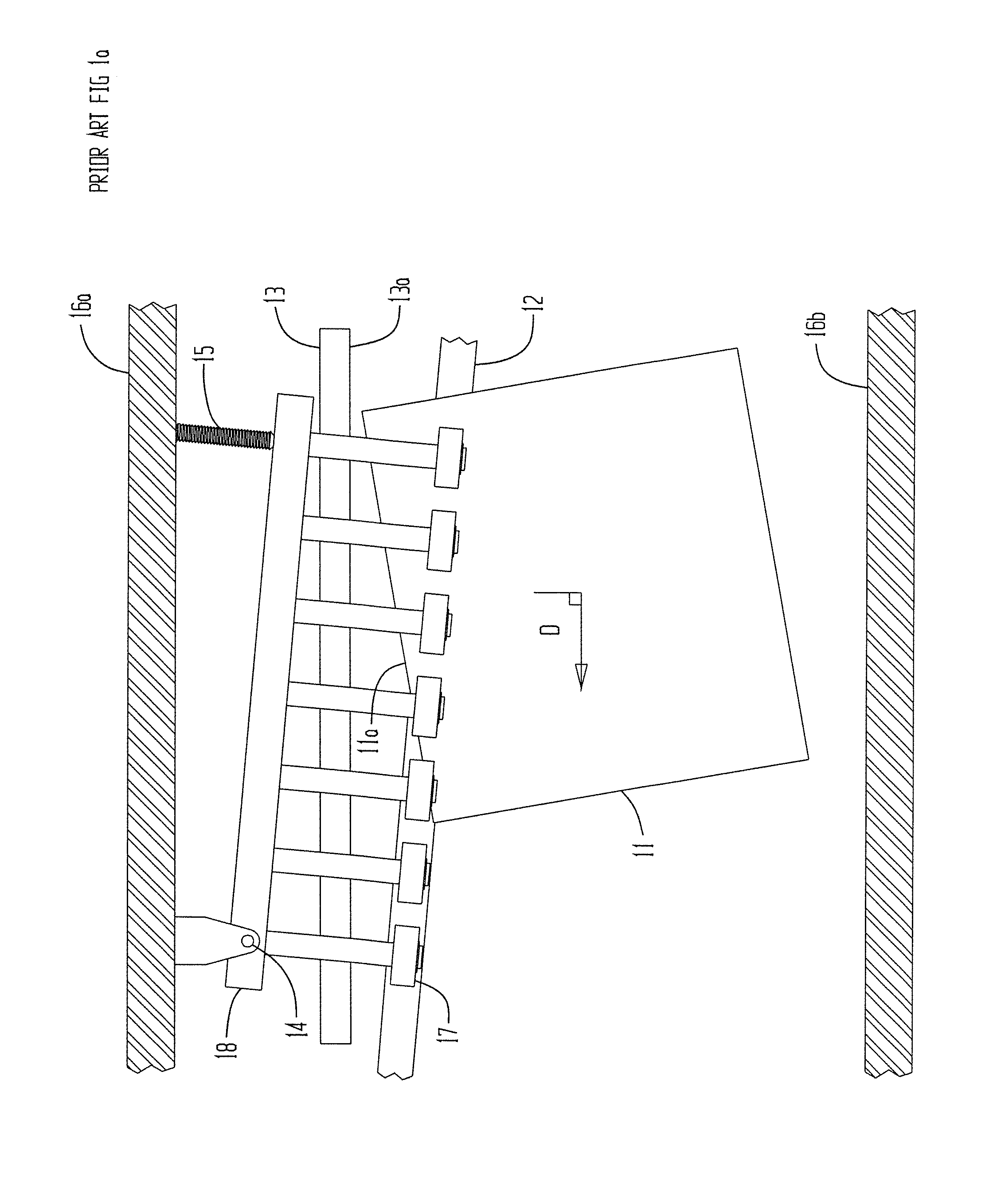Method and apparatus for sheet and carton blank aligning using caster effect
a technology of caster effect and caster belt, which is applied in the direction of registering devices, thin material processing, article separation, etc., can solve the problems of inability to accurately predict the longitudinal speed of the blank, the skewed or angled blank carried on the vacuum belt, etc., and achieve the effect of accurate prediction, convenient operation and high production efficiency
- Summary
- Abstract
- Description
- Claims
- Application Information
AI Technical Summary
Benefits of technology
Problems solved by technology
Method used
Image
Examples
Embodiment Construction
Prior Art
[0034]FIGS. 1a and 1b show a top view schematic of a prior art carton aligner used with prior art carton folder / gluers such as those provided by American International Machinery of Oak Creek, Wis., Bobst of Lausanne, Switzerland and Heidelberger Druckmaschinen AG of Heidelberg, Germany. Carton blank 11, shown here in a skewed orientation relative to its intended conveying direction D and is carried on driven carrier belt 12. Carrier belt 12 is typically driven by drive pulleys on a drive shaft via a motor drive system (not shown). In FIG. 1a, side edge 11a of blank is about to contact alignment bar 13. Guide bar 13 is supported by side frame 16a, by conventional means, not shown. Blank 11 is driven towards aligning surface 13a of bar 13 by a series of rollers 17 that are held on an adjustable frame 18 via pivot 14 and adjuster 15. The frame 18 is supported by side frame 16a. The rollers 17 are shown in an angled orientation relative to side frames 16a, 16b and guide bar 13 ...
PUM
 Login to View More
Login to View More Abstract
Description
Claims
Application Information
 Login to View More
Login to View More - R&D
- Intellectual Property
- Life Sciences
- Materials
- Tech Scout
- Unparalleled Data Quality
- Higher Quality Content
- 60% Fewer Hallucinations
Browse by: Latest US Patents, China's latest patents, Technical Efficacy Thesaurus, Application Domain, Technology Topic, Popular Technical Reports.
© 2025 PatSnap. All rights reserved.Legal|Privacy policy|Modern Slavery Act Transparency Statement|Sitemap|About US| Contact US: help@patsnap.com



